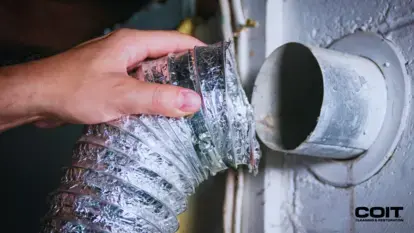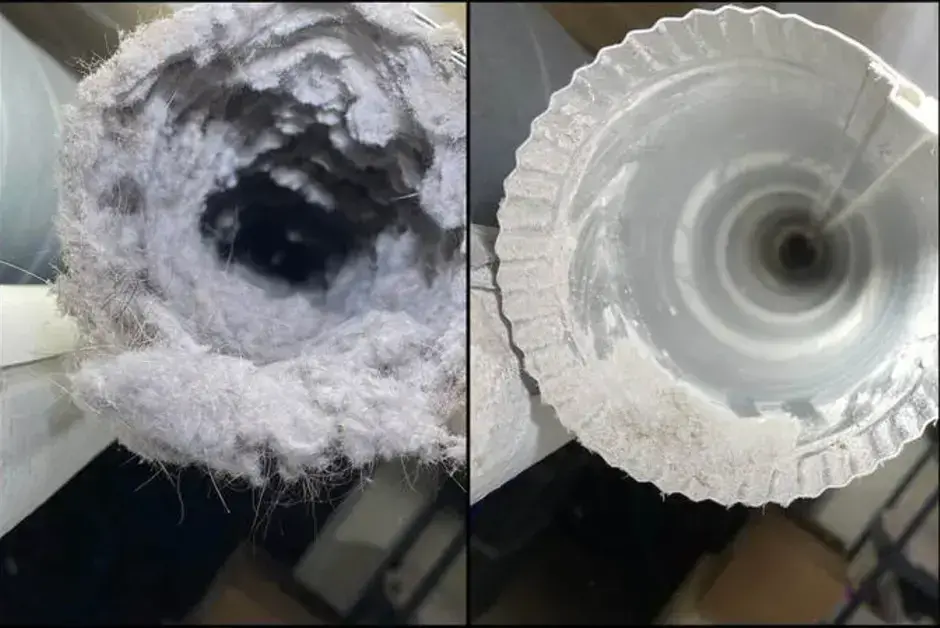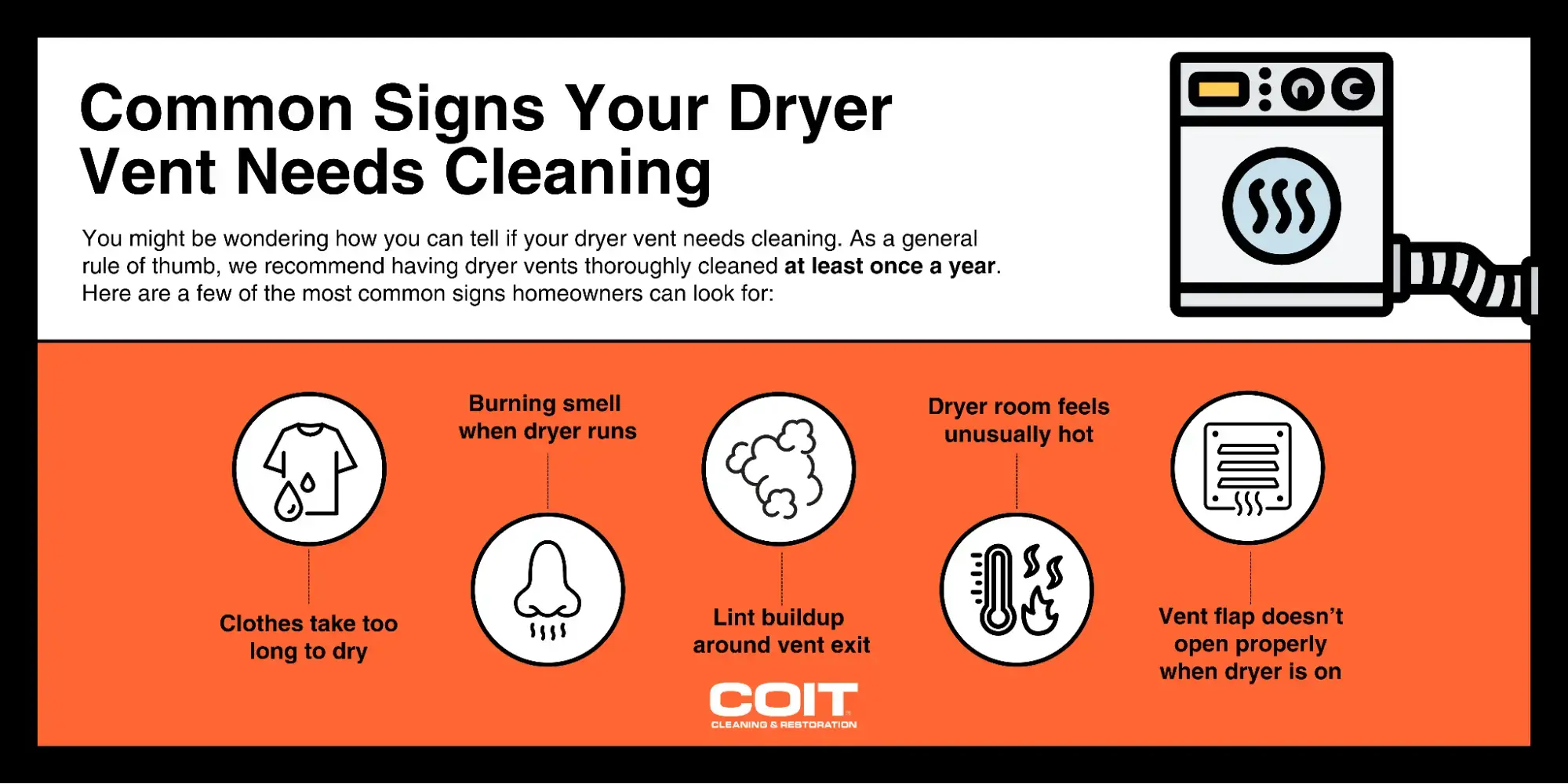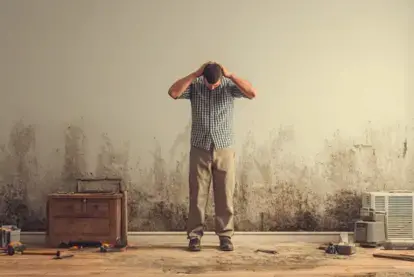
What Is the Best Method for Dryer Vent Cleaning?
What Is the Best Method for Dryer Vent Cleaning?
Nearly 92% of house fires involve clothes dryers. The cause? Lint buildup. When we dry our clothes, tiny fibers begin to shed from the fabric, which are then collected in the machine’s lint trap during the drying process. Failure to routinely clean the lint trap, ideally before each use, can cause the accumulated lint to ignite and spark a fire. According to the National Fire Protection Association (NFPA), dryers and washing machines cause an average of 15,970 fires each year.
For the safety of your household, stressing the importance of cleaning the dryer vent should be of the utmost importance.
So, what is the best method for dryer vent cleaning? In this article, we’ll cover the importance of dryer vent cleaning to promote healthy indoor air quality and boost appliance performance along with how to clean your dryer vent and expert dryer fire prevention tips.
Why Dryer Vent Cleaning Is More Than Just a Chore
Making the bed, vacuuming, doing the laundry, and wiping down counters are all common chores that help to maintain a clean, healthy living space. Cleaning out the dryer vent, however, is more than just a chore—it’s a crucial safety measure that can keep you, your loved ones, and your property safe. Between fire risk, poor appliance performance, and higher energy use (which means higher energy bills), there are real-life consequences that stem from clogged dryer vents.

Common Signs Your Dryer Vent Needs Cleaning
You might be wondering how you can tell if your dryer vent needs cleaning. As a general rule of thumb, we recommend having dryer vents thoroughly cleaned at least once a year. Here are a few of the most common signs homeowners can look for:
- Clothes take too long to dry
- Burning smell when the dryer runs
- Lint buildup around the vent exit
- The dryer or laundry room feels unusually hot
- The vent flap doesn’t open properly when the dryer is on

If you notice any of these tell-tale signs, it is time to clean out your dryer vent.
For professional dryer vent cleaning services, contact COIT today.
Comparing Dryer Vent Cleaning Methods
There are a few effective methods when cleaning dryer vents. If you plan to go the DIY route, you will want to make sure you have the proper tools before getting started, such as a screwdriver, a vacuum with a hose attachment, a brush to remove lint, and perhaps even a dryer vent brush kit.
Here’s a breakdown of how you can clean dryer vents yourself:
- Take proper safety measures and wear protective gloves and a mask to prevent breathing in lint or dust.
- Unplug the dryer and pull it about a foot away from the wall.
- Disconnect the dryer vent from the back of the dryer.
- Use a brush to dislodge dust and debris.
- Vacuum up loose dust and debris.
- Reconnect the ductwork to the dryer.
- Push the dryer back into place and plug in.
- Perform a test run to ensure everything is running smoothly.
While the do-it-yourself option might sound quicker and more cost-effective, it doesn’t allow the full reach that professional equipment is able to provide and may result in more frequent cleanings. Not to mention, when you hire professionals, they’ll not only be able to provide a more thorough clean but can also inspect your system and replace ductwork if needed.
To schedule your annual dryer vent cleaning, contact COIT today!
Professional Dryer Vent Cleaning (COIT’s Method)
Trained professionals have the tools and techniques required to reach places homeowners often can’t reach. If you decide to forgo the DIY option and opt to hire professional cleaners like COIT, here’s a breakdown of what you can expect from the service:
- We’ll start by inspecting the dryer and turning it on to make sure it’s functioning properly. As it’s running, we go outside to the exhaust vent to see if the airflow is making its way through the tube. This lets us know how congested the tube is or if there is a potential disconnect or leak.
- From the outdoor vent access point, we use our reversed compressed air whip to extract any lint, repeating this process until we reach as deep into the vent as possible or until no further lint is removed.
- Once we have performed the cleaning from the outside, we go back to the inside, turn the dryer off, and inspect the lint filter exhaust area of the dryer, cleaning out internal filters from inside the appliance. If possible, we will safely pull out the dryer to access the connections to the exhaust vent.
- With the dryer pulled out, we vacuum and clean behind the dryer. We remove the connection from the dryer and attach an adapter that allows us to extract lint from inside the vent exhaust while inserting compressed air whips.
- When there’s no more lint being extracted from inside the unit, we reconnect the dryer to the exhaust vent and confirm all connections are secure.
- As the final step, we run the dryer again to ensure it’s working properly, and all airflow is making its way through the exhaust tube.
Risks of Incomplete or Improper Dryer Vent Cleaning
Cleaning a dryer vent yourself is certainly an option, but there are risks to incomplete or improper dryer vent cleanings that should be considered. These risks are especially prevalent in older homes and rentals.
Carbon Monoxide Poisoning
We’ve discussed the potential for a fire as a result of a clogged dryer vent, but for homes that use gas dryers, there is also the potential for carbon monoxide poisoning, which is a serious health hazard.
Mold Growth
When moisture becomes trapped in your dryer’s ductwork, this also creates the perfect breeding ground for mold, which can trigger allergy symptoms such as sneezing, coughing, and asthma, and cause potential damage to your home’s interior.
Decreased Appliance Lifespan
In addition to health concerns, a clogged dryer vent will also lower your dryer’s lifespan and can potentially damage your clothing.
For these reasons, it’s important to conduct proper research before attempting to clean dryer ducts yourself and ensure you have the proper equipment to complete the job safely and thoroughly.
Conclusion – Keep Your Home Safe and Efficient
As a reminder, dryer vents should be deep-cleaned annually. When you get your dryers professionally cleaned by COIT, you’re keeping your household safe from potential fire hazards and health risks. Not to mention, a clogged dryer vent has to work overtime to get clothing to dry, and ensuring there aren’t any blockages can decrease your monthly energy bill and increase your appliance’s lifespan.
For peace of mind, contact us for a professional, safe, and thorough dryer vent cleaning.
Don’t wait for a fire hazard—book your dryer vent inspection with COIT today!



